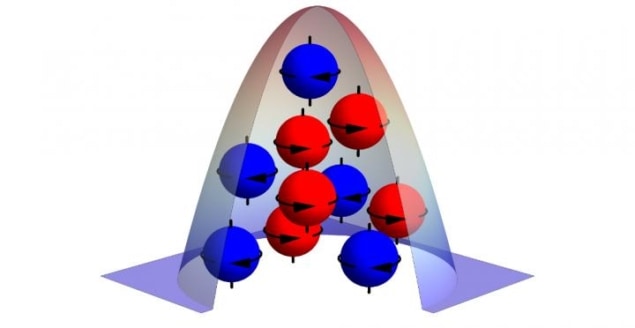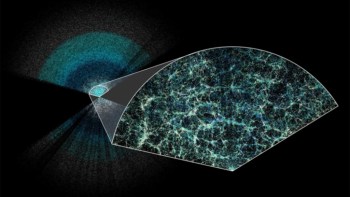
A new atomic comagnetometer that could be used to detect hypothetical dark matter particles called axions has been created by physicists in Spain. The sensor uses two different quantum states of ultracold rubidium atoms to cancel out the effect of ambient magnetic fields, allowing physicists to focus on exotic spin-dependent interactions that may involve axions.
Dark matter is a mysterious substance that appears to account for about 85% of the matter in the universe – the other 15% being normal matter such as atoms and molecules. While myriad astrophysical observations point to the existence of dark matter, physicists have very little understanding of its precise nature.
Some dark matter could comprise hypothetical particles called axions, which were first proposed in the 1970s to solve a problem in quantum chromodynamics. If dark matter axions do exist, they could mediate exotic interactions between quantum-mechanical spins – in analogy to how photons mediate conventional magnetic interactions between spins.
Two detectors
These exotic interactions would be weak, but in principle they could be measured using an atomic comagnetometer, which comprises two different magnetic-field detectors that are in the same place. The device is set so that the effects of ambient magnetic fields in the two detectors can be cancelled out. So, a residual signal in the comagnetometer could be the result of an exotic interaction between atomic spins within the detector itself.
The new comagnetometer was created at the Institute of Photonic Sciences in Barcelona by Pau Gomez, Ferran Martin, Chiara Mazzinghi, Daniel Benedicto Orenes, Silvana Palacios and Morgan Mitchell. The two different detectors are rubidium-87 atoms that are in two different spin states that respond in different ways to magnetic fields.
Near absolute zero
The atoms are in a gas that is chilled to near absolute zero to create a Bose-Einstein condensate (BEC). In this state the atoms are relatively immune to being jostled about by thermal interactions. This means that for several seconds the spins can respond in a coherent way to spin interactions. The BEC is also very small – just 10 microns in diameter – which boosts its performance as a comagnetometer and means that short-range axion interactions can be probed.
The response of the spins to a magnetic field is measured by firing a polarized of a beam of light at the BEC and measuring how its polarization is rotated. By comparing measurements on the two different spin states, the effect of ambient magnetic fields can be removed, allowing the team to look for any exotic interactions that are affecting the spins.
Although no evidence of axions has been found by the device so far, the team has shown that the comagnetometer is highly immune to noise from ambient magnetic fields. They say that it could be run at a sensitivity on par with other types of comagnetometers that are currently looking for axions. The device has already been used to measure conventional spin interactions between the ultracold atoms and the team says that other potential applications include spin amplification, which could be used to study quantum fluctuations.
The comagnetometer is described in Physical Review Letters.



